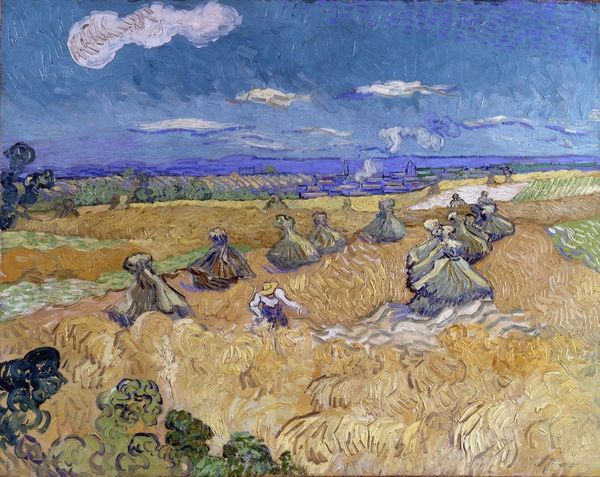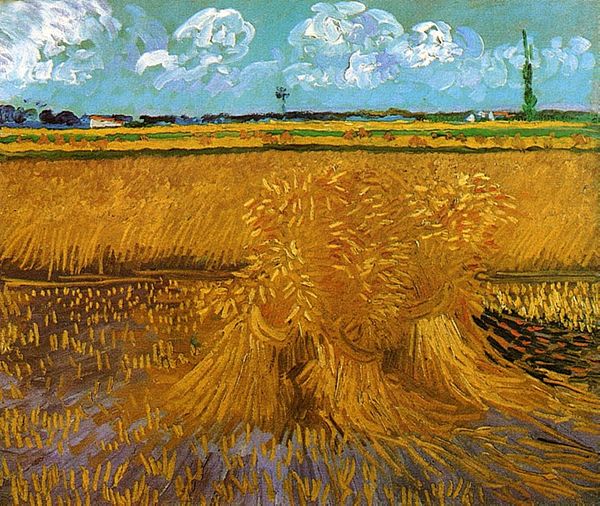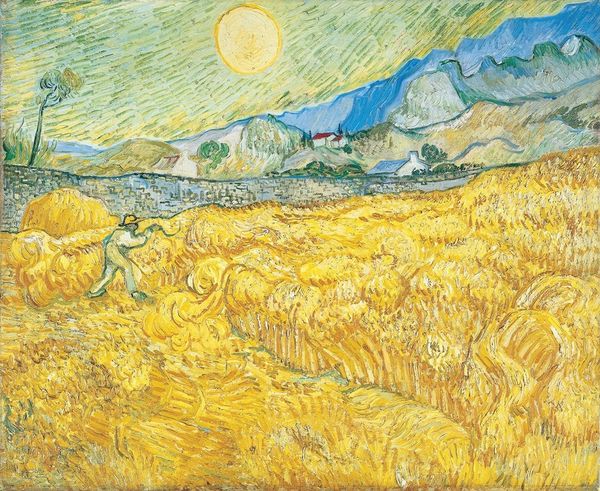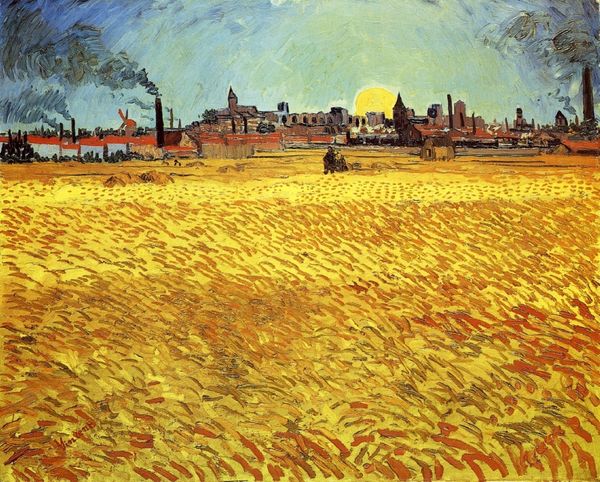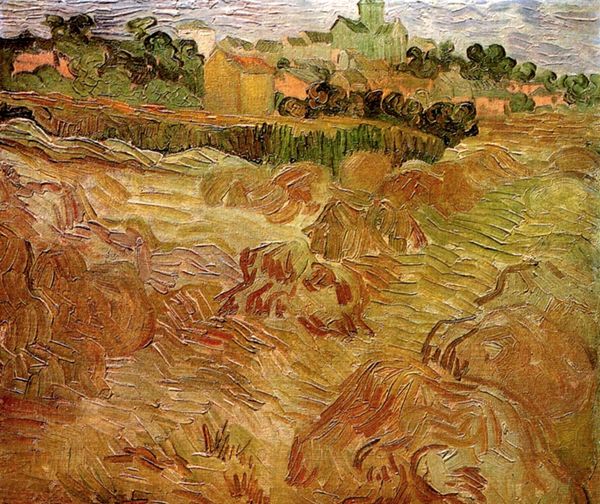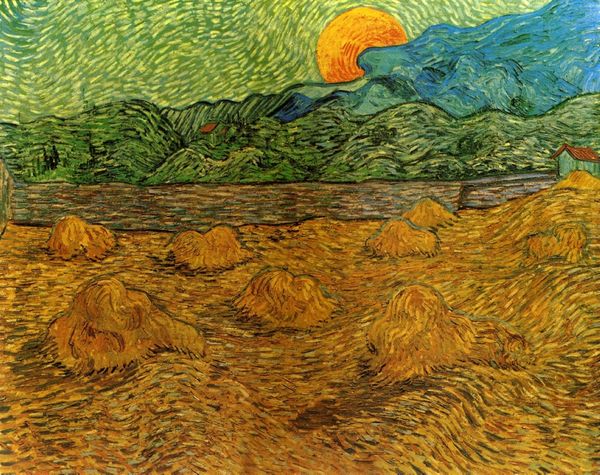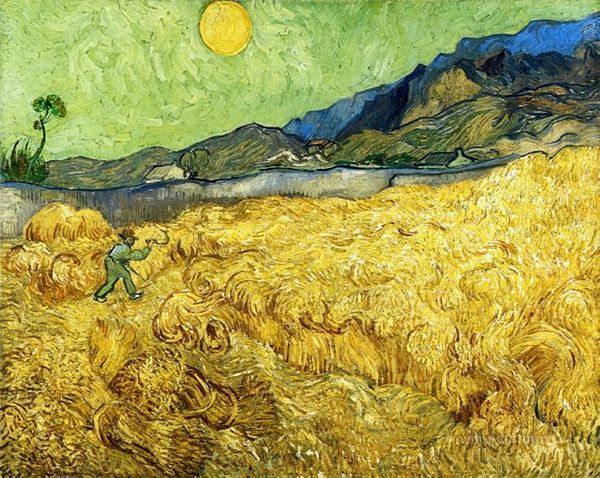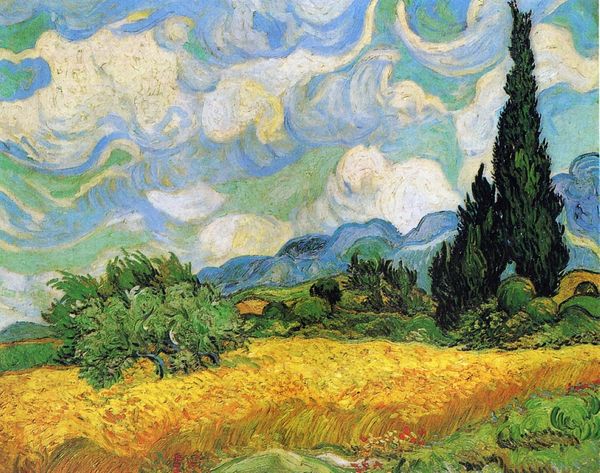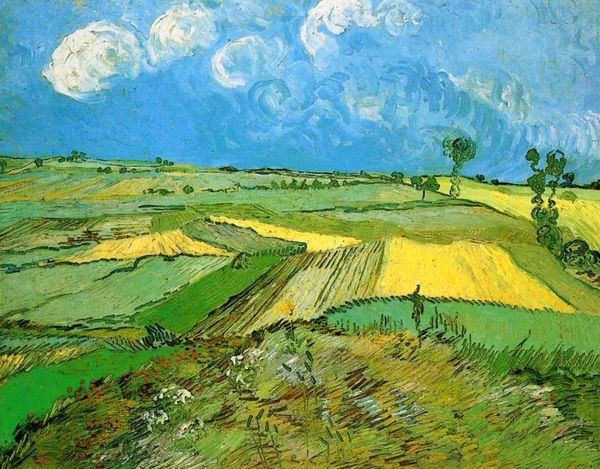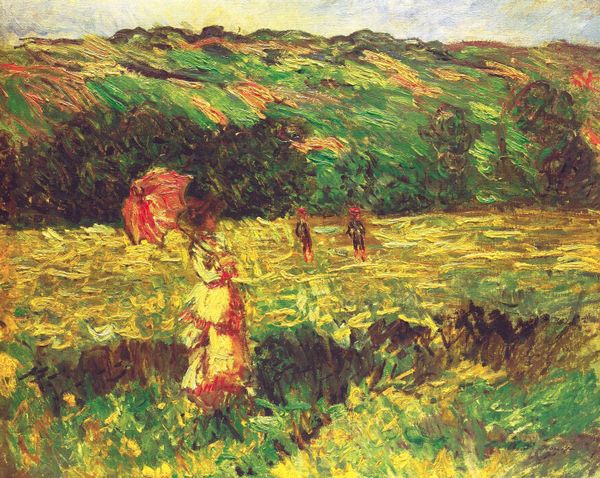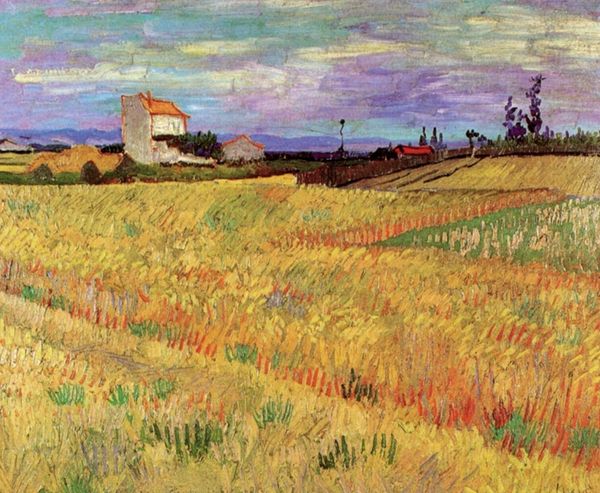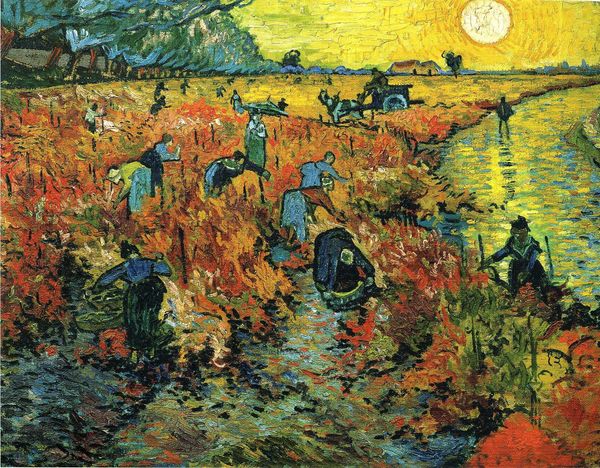
painting, plein-air, oil-paint, impasto
#
painting
#
plein-air
#
oil-paint
#
landscape
#
impasto
#
genre-painting
#
post-impressionism
#
realism
Dimensions: 93 x 73.6 cm
Copyright: Public domain
Curator: We are standing before Vincent van Gogh's "Wheat Stacks with Reaper," created in 1888. The canvas is alive with the heat of the Provencal sun, housed here at the Toledo Museum of Art. Editor: Wow, the sheer density of the paint is the first thing that strikes me. It's almost sculptural, an aggressive assertion of the medium itself. You can practically feel the physicality of the scene. Curator: Absolutely. Painted en plein air, this work offers insight into Van Gogh's complex relationship with rural life and the peasant class, especially the societal dynamics he encountered while in Arles. We can appreciate the political undercurrent that shows in his realistic subjects with a style and attention given at that time almost exclusively to more aristocratic subject matter. Editor: And that impasto technique really does emphasize the labor inherent in agriculture. It is about not just seeing a field but the work of cultivating the food we eat, as if we are standing in that very field. Curator: He aimed to elevate these traditionally working-class subject matters in the field, something he likely adopted in reference to what Jean-François Millet sought to achieve previously, but stylistically, they depart greatly from the kind of restrained Realism that was common in France, diverging and foreshadowing Fauvism later on. Editor: The layers of paint here reveal not just Van Gogh's brushstrokes but, I'd argue, also something of the weight of that social dynamic. Each ridge of paint carries a meaning, so charged with expression, both material and societal, reflecting the reality and the intensity of that existence. Curator: And consider the role of art institutions and galleries; they initially dismissed his work. But his ability to convey humanity outside the salon became foundational to many artists in subsequent decades, with widespread social appeal that outlives generations of viewers. Editor: Precisely. It shows the potential for art to reframe perspectives, spotlight the dignity of labour, and ultimately shape our cultural values regarding class structures, production of art and other human essentials. Curator: Van Gogh certainly used art to challenge norms and transform the public’s imagery and engagement with agriculture. Thank you for considering "Wheat Stacks with Reaper" with us here today. Editor: It’s a powerful demonstration of the materiality of painting intersecting with real-world realities. Thanks for having me.
Comments
No comments
Be the first to comment and join the conversation on the ultimate creative platform.
